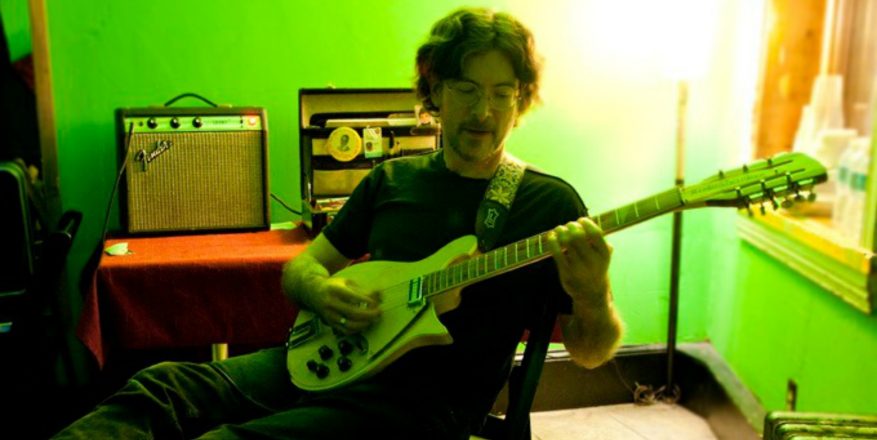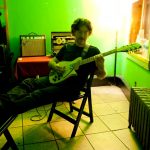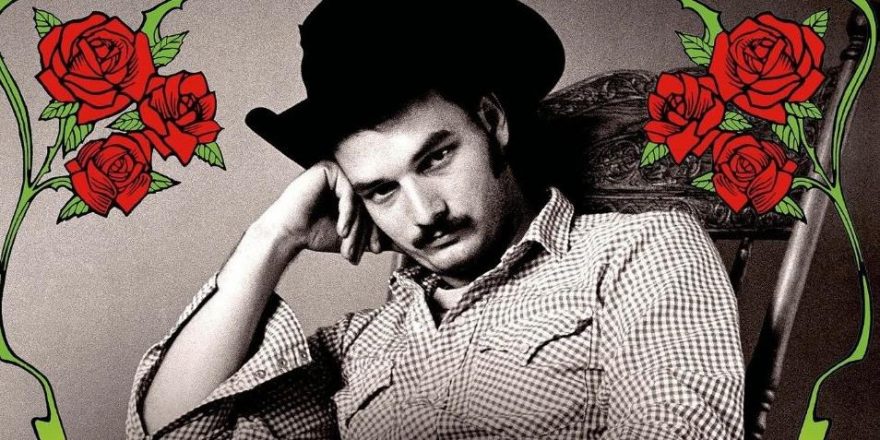Let me begin by saying that I don’t consider myself to be a shredder; I don’t like the term. I’ve been described as such more than once in print, and even though it’s basically meant as a compliment, I always cringe when I see it. I get that there’s a whiff of irony in the use of the term — and that it’s meant to denote being a total badass. But I can’t shake the connotations of the word as it applies to the guitar and its evocation of hyper-technical manly domination of the instrument. I’m interested in space and discovery and lyricism, not supremacy. I want to hear multiple strands of sounds and influences laid together. I think of myself as being more of a weaver.
Maybe the whole shred thing leaves a bad taste my mouth because it was so prevalent during my formative years as a guitarist. In the ’80s, that super flash, play-as-many-notes-as-you-can approach saturated guitar culture — the magazines, the stores, etc. — just as I was first learning how to play the guitar and to use it to express ideas. And I instinctively knew then, and still believe now, that what they called shredding was the opposite of what I desired from music — as a player or a listener. I recall a quote from R.E.M.’s Peter Buck (who was my first real guitar hero) in a guitar mag in the late ’80s about Yngwie Malmsteen. It was something to the effect of, “He can play a million notes, but maybe it’s because he can’t put two good ones in a row.” Yes to that.
You see, I subscribe to the Don Van Vliet’s Second Commandment of guitar playing: “Your guitar is not really a guitar. Your guitar is a divining rod. Use it to find spirits in the other world and bring them over. A guitar is also a fishing rod. If you’re good, you’ll land a big one.”
The shredder mistakes the object for the music.
Now, I could geek out about guitars and amplifiers all day, and sometimes I do. But essentially, I think putting so much focus on an object is really missing the point.
The shredder mistakes the object for the music, the flesh for the spirit, and tries to master the former at the expense of the latter. It’s a very earthly dilemma. There are centuries of literature and art that deal with this general struggle.
I give guitar lessons with some frequency, and one of the things I always say to students at the outset is that if I specialize in anything, it’s taking guitar players and turning them into musicians. Here are a few generalizations on the subject:
1) One good idea is enough.
2) Ideas trump chops every time.
3) Play to the edge of your ability.
4) The future is the past and vice versa.
5) Idiom is a false front.
None of this has to do with guitars. The key is mostly in your mind, although certainly some of it is in your fingers. I think the gear, the object, is really the least important piece of the puzzle. Even when it comes to that elusive notion of tone, it’s your head and fingers that are responsible for ninety percent of the sound.
Conceptualism is legit, and I also think it’s immensely valuable to learn as much as you can about how music works, the theory of it, but I don’t think these aspects are the most necessary ingredients for making the best art. Some of my favorite guitarists are not really that technically proficient, or, rather, they are so unique because they pushed the limitations of their technique to the point that they created a sound that’s unmistakably theirs. Neil Young, Loren Connors, Jerry Garcia, John Fahey and John Lee Hooker all have huge gaps in their technique. They are not virtuosos, but they are masters. You really only need to hear a few notes to know it’s unmistakably them. And they all put their ideas ahead of their chops. They are pushing, filtering knowledge of the past into the present and hence the future. The imperfections in the playing signal a full range of emotion and experience, the invitation of vulnerability and embarrassment as a route to transcendence. I think that as long as you are pushing, it’s not really a matter of technique at all. Bikini Kill was one of the most exciting bands ever and they could barely play in the conventional sense. Look at Jad Fair. Look at Junior Kimbrough.
Television’s Richard Lloyd, when I studied with him, described to me the ideal state of playing a guitar solo as being like someone running down a very steep hill and just trying to reach the bottom standing upright. That person is not thinking, “Let me put this foot here and that foot there and then here.” It’s not a mental exercise; it’s instinct. Sometimes you make it to the bottom of the hill standing, and sometimes you wipe out. But your mind and body can do amazing things, things you cannot pre-conceive or rehearse, if you put them in a position to do amazing things. I think about this approach every time I pick up a guitar. And to me, this idea applies not just to guitar playing, but also to every creative act. The future of the guitar? It’s the same as it’s always been, and it’s dependent on people continuing to run down that hill.








